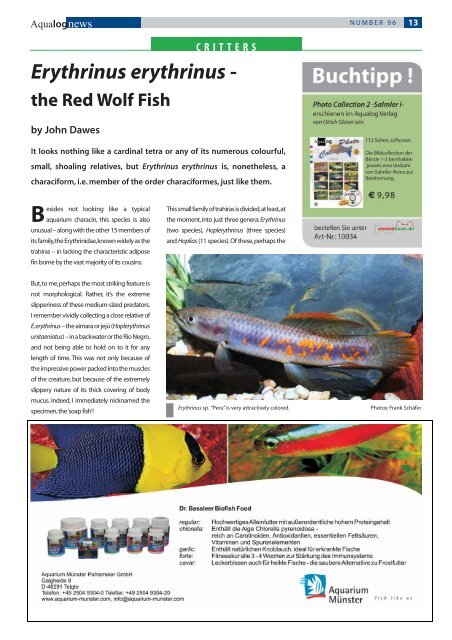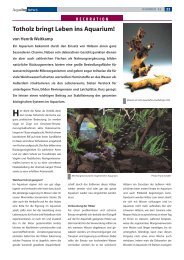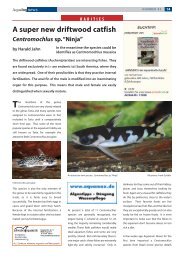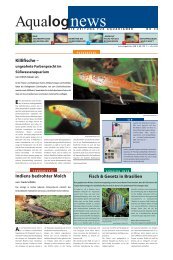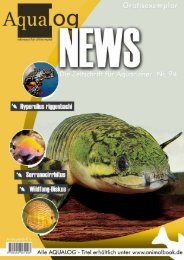Moenkhausia cosmops - Aqualog
Moenkhausia cosmops - Aqualog
Moenkhausia cosmops - Aqualog
You also want an ePaper? Increase the reach of your titles
YUMPU automatically turns print PDFs into web optimized ePapers that Google loves.
<strong>Aqualog</strong>news NUMBER 96 13<br />
B<br />
esides not looking like a typical<br />
aquarium characin, this species is also<br />
unusual – along with the other 15 members of<br />
its family,the Erythrinidae,known widely as the<br />
trahiras – in lacking the characteristic adipose<br />
fin borne by the vast majority of its cousins.<br />
But,to me,perhaps the most striking feature is<br />
not morphological. Rather, it’s the extreme<br />
slipperiness of these medium-sized predators.<br />
I remember vividly collecting a close relative of<br />
E.erythrinus – the aimara or jejú (Hoplerythrinus<br />
unitaeniatus) – in a backwater or the Rio Negro,<br />
and not being able to hold on to it for any<br />
length of time. This was not only because of<br />
the impressive power packed into the muscles<br />
of the creature, but because of the extremely<br />
slippery nature of its thick covering of body<br />
mucus. Indeed, I immediately nicknamed the<br />
specimen,the ‘soap fish’!<br />
CRITTERS<br />
Erythrinus erythrinus -<br />
the Red Wolf Fish<br />
by John Dawes<br />
It looks nothing like a cardinal tetra or any of its numerous colourful,<br />
small, shoaling relatives, but Erythrinus erythrinus is, nonetheless, a<br />
characiform, i.e. member of the order characiformes, just like them.<br />
This small family of trahiras is divided,at least,at<br />
the moment, into just three genera: Erythrinus<br />
(two species), Hoplerythrinus (three species)<br />
and Hoplias (11 species). Of these, perhaps the<br />
Erythrinus sp. “Peru” is very attractively colored. Photos: Frank Schäfer


